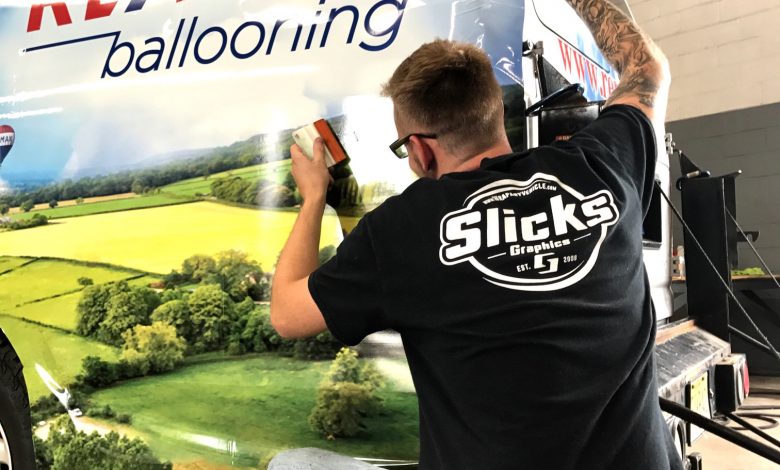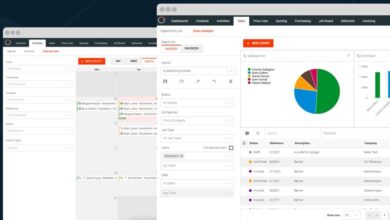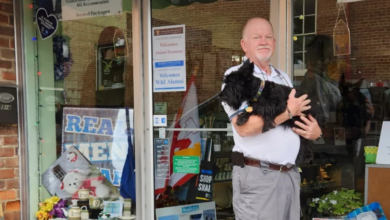Vehicle Wraps 101: Info to Know
Here's some helpful info from the owner of Slicks Graphics in Morrisville, Pennsylvania

Car wraps have been around for a few decades now, while the technology behind building these graphics has evolved tremendously over the last decade alone. This article was put together to highlight great points to consider when looking for a new vehicle wrap for a business.
Justifying a vehicle wrap
At this point, almost everyone has seen or at least heard of a vehicle wrap to some degree or another. Vinyl wraps are almost everywhere in today’s busy world of huge graphics, and films are applied to all different types of vehicles including cars, trucks, trailers, and buses, and they are even used for both smooth and textured wall applications.
Next time you’re on your way to the store, look out for really colorful vehicles that send large-format messages to their audiences through fat graphics that stand out from the plain Jane solid color cars passing by. There’s hardly one errand a person can run without seeing a handful of vehicle wraps and trailer wraps passing by. This is because wraps simply work.
Why are business owners turning to vehicle wraps?
Commercial vehicles have an obligation to transport either products, passengers, or even employees to various job sites each day they want to continue to stay in business. Why not stand out in this process, extending thousands of impressions to potential new clients through a vibrant new vehicle wrap? This opportunity is the ultimate way for a business to accelerate finding new leads and creating opportunities.
Take a local plumber for example. A smaller operation with one service truck that’s newer to the plumbing industry, just getting started as the business owner networks with all of their friends and family to try to drum up new plumbing jobs. Imagine in this situation, the company has a job at a location where hundreds of locals pass by each and every day. If there is nothing on this blank white van, then how likely is it this plumber is going to find new work, while simultaneously working on someone’s toilet inside the building?
If this plumber gets their new van wrapped with a catchy, colorful design, then while that van sits in their customer’s driveway, each day all those locals pass by, taking notice to this new plumbing company and the services the new van wrap is promoting. This cycle continuously helps local business owners promote and build market share within a community. And unlike traditional billboards that carry monthly reoccurring bills to rent, wrap owners own their mobile billboard.
How much does a wrap cost?
Depending on the type of vehicle wrap, the cost does fluctuate to a degree along with the grade of the film purchased. To better explain this, let’s look at a couple of different examples. First, consider a Ford Transit Connect, a smaller utility van in comparison to the full-size transit. Paired with a high-performance wrap and a new design built from one of Slicks’ creative designers, a customer would be looking at roughly $2,200 before tax without any roof coverage or bumper coverage.
This would mean that outside of the usually already black textured plastic bumpers (not wrap friendly) or the roof that most potential customers would never see anyway, everything else on the vehicle would be completely covered in this new vehicle wrap. For DOT regulations and driver safety, wrap companies are not allowed to cover the front driver or passenger windows or windshield areas of the vehicle. All other glass areas can be covered with an optional perforated window graphic film.
Larger vans with a wheelbase around 136″ holding similar coverage run closer to the $3,200-$4,500 range, depending on the final size and coverage of that vehicle.
Our second example is calculated on a Ford Focus. Believe it or not, not only will the painted bumpers require coverage to avoid clashing with the new design, but so will the door handles and most likely mirrors and even the roof, as these cars sit much lower to the ground, allowing most standing civilians to be able to see the entire car. This ends up adding time and material to the cost of the car wrap, bringing the average cost up to the $2,800-$3,400 range using a high-performance film.
There are alternative films with an intermediate grade performance guarantee for those looking to save money, but customers start to sacrifice performance to compound curves like handles and bumpers, along with age expectancy, as these films typically last half of the lifetime of the high-performance vehicle wrap films.
How long does it last?
It’s first important to understand the difference between cast and calendered films. High-performance films are made from a cast vinyl, while intermediate films are made from calendared vinyl. A cast film is made by pouring the PVC-based film into a rolling mold, enhanced with plasticizers to improve the film’s overall conforming function. This allows the natural state of the cooled plastic vinyl to be 100% at the start of the production process and final installation process. That advantage promotes itself when an installer is trying to wrap something like a door, where the low spot in the door handle area requires the film to be moderately stretched into a low point for complete door coverage.
Without a cast-base film, the vinyl would start to shrink naturally and pop up, creating an air pocket, which eventually cracks, collects water/moisture, and starts to fail in a complete section on the vehicle wrap. Cast vinyl wraps typically last 3-5 years and can easily surpass 5 years with extra care and maintenance.
Calendared films allow typically a 20-25% savings on the original cost of a high-performance vehicle wrap, but these films are made like a pizza. The calendared film is stretched to the size of the raw material roll that companies such as Slicks will then print the customer’s graphics on and install it. Not only is this film only rated for 1-2 years, but the failure rate in recessed channels or compound curves on the vehicle is much higher than a traditional high-performance, cast-film vehicle wrap.




